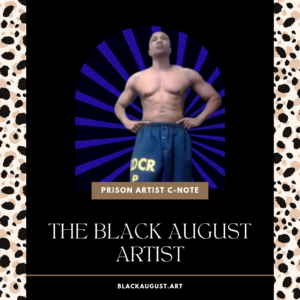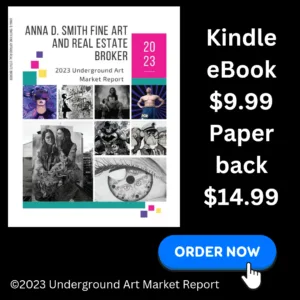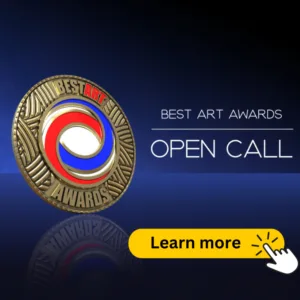The design for the Soul City Corridor gateway arch is slowly coming together as artist Bernard Williams works on a draft that is expected to be released to the public later this year.
The Chicago Department of Cultural Affairs and Special Events (DCASE) and Chicago Department of Transportation (CDOT) are planning two structures near the two ends of the Austin portion of Chicago Avenue – a larger gateway arch at the west end of the corridor at 5946 W. Chicago Ave., and smaller signs will be mounted on light poles near the east end of the corridor, near the intersection of Chicago and Cicero avenues.
This is something Malcolm Crawford, head of the Austin African American Business Networking Association (AAABNA) has long advocated as part of a broader vision of revitalizing Chicago Avenue as the “Soul City Corridor,” the commercial and cultural hub of Austin’s Black community.
This spring, DCASE chose Williams to design the two structures, and he and the department have been working on the preliminary design. His works tend to feature prominent symbols and interplay of light and shadow. During the July 22 monthly stakeholders meeting organized by AAABNA, Williams shared some potential symbols and asked for feedback.
The attendees said they liked his use of Adinkra symbols, metaphor-laden designs that originated in what is now Ghana. They also suggested using more symbols related to kids and teens. Crawford urged Williams to pay attention to ideas and concepts that have already been developing, so that he doesn’t duplicate what’s already there and cover the same ground.
AAABNA has been holding stakeholder meetings on the third Friday of the month to update residents on Chicago Avenue improvements and other major projects. The meetings are held over Zoom and open to the public. The meeting information is only shared via AAABNA’s official newsletter, and residents can use a sign-up form on the association website’s front page.
Williams has created public art all over Chicago and several cities in Indiana. During a community meeting in January that introduced him and the other two finalists to the community, he said he likes crafting pieces that speak to the history of the location and utilize a combination of words, symbols and imagery. Williams is also conscious of the kind of shadows his pieces create.
During the July 22 meeting, he said he doesn’t have a gateway design he could share, because he and DCASE were still hashing out the details. Williams did share symbols and logos he was thinking about including in the gateways.
“It seems a bit early to share the design right now, because so many elements are in flux, so I want to share some of the symbols that we’re using in the structure, and just get some feedback, and, you know, get a feel for some of the changes that I might make as we get closer to sharing the design” he said.
The symbols included several traditional Adinkra symbols. Some, like the Sankofa bird and the Dwenini ram’s horns symbols, are already painted on several Westside Health Authority buildings at the other end of the corridor. Other symbols Williams proposed included a Black Power fist, musicians playing instruments, a symbol of two hands holding up a home to illustrate the importance of Black homeownership, and a silhouette of a man in a graduation cap, among others.
“In [my] initial proposal, there were some ideas about celebrating music, celebrating food,” Williams said. “There was a big interest in working with red, black and green [Pan-African flag] coloring, because that seems to be a big theme along the corridor.”
Morris Reed, CEO of Westside Health Authority, said he likes the Sankofa bird symbol, and that his only concern was the gateways would use too many symbols, making the design too “busy.”
“The creative, simple way would be best, and one that I would recommend,” he said.
Williams responded that he was hoping to narrow down the symbols to what best represents the community.
Vanessa Stokes, who runs the health authority’s Special Service Area 72 at the east end of the corridor, echoed some of Reed’s comments.
“I just want to kind of first say that I think — I like the way you’re going with this,” she said. “I would have to say I’m leaning toward the Adinkra symbols [because] the Adinkra symbols really resonate.”
Austin artist Toni Ruppert, who DCASE previously chose as a community “artist in residence,” said she liked the “diversity” of symbols Williams suggested.
“The symbolism is working here because it’s a snapshot as you’re driving past the gateway,” she said. “[It should be] just a snapshot of what the community needs and the important things to the community, and you have a lot of diverse symbols. And I like the diversity of the symbols, to be honest.”
Ruppert’s one concern is that she didn’t see any symbols showing children. Williams said it was a good suggestion, and he’d work it in.
Williams said that he wanted to get “younger students and younger folks” involved in the project – something that he was trying to work with the Chicago Park District on. Jordan Campbell, co-founder of Alt Chicago, an Austin organization that seeks to improve the community through art, suggested the Austin branch library, 5615 W. Race Ave., and the Kehrein Center for the Arts, 5628 W. Washington Blvd.
Crawford cautioned Williams that he should be mindful of what came before and urged him to incorporate ideas and concepts that are already there.
“I would ask that you guys look at what has already been done, continue to communicate to those of us that have been already doing the work, and not try to re-create what has already been created,” he said. “Just know that there’s a body of people who have done work for a long time, and [they are] ready and willing to help you to continue to work on what we create.”






